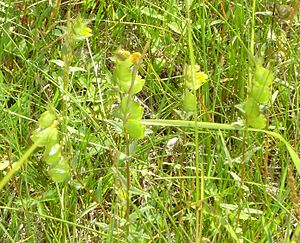Botanical Name : Amelanchier humilis
Family: Rosaceae
Genus: Amelanchier
Species: A. humilis
Kingdom: Plantae
Order: Rosales
Common Name : Low serviceberry
Habitat : Amelanchier humilis is native to Eastern N. America – Vermont to Alberta and south to New York and Iowa. It grows on the rocky or sandy shores and banks, often calcareous.
Description:
Amelanchier humilis is a deciduous Shrub growing to 1.8 m (6ft) by 3 m (9ft). The fruit, which is a pome, is very dark, almost black. It is edible and can be eaten raw or cooked. The fruit has a sweet taste, with slight apple flavor. The leaves are egg-shaped, up to 5 cm (2 inches) long.
It is not frost tender. It is in flower in April, and the seeds ripen from Jun to July. The flowers are hermaphrodite (have both male and female organs) and are pollinated by Bees.The plant is self-fertile.
Cultivation:
Prefers a rich loamy soil in a sunny position or semi-shade but thrives in any soil that is not too dry or water-logged. Grows well in heavy clay soils. Plants are often found growing on calcareous soils in the wild. Hardy to about -25°c. All members of this genus have edible fruits and, whilst this is dry and uninteresting in some species, in many others it is sweet and juicy. Many of the species have potential for use in the garden as edible ornamentals. The main draw-back to this genus is that birds adore the fruit and will often completely strip a tree before it is fully ripe. This species produces suckers freely, forming thickets. Closely related to A. stolonifera. Hybridizes with A. stolonifera, A. arborea and A. bartramiana. Grafting onto seedlings of A. lamarckii or Sorbus aucuparia is sometimes practised in order to avoid the potential problem of hybridizing.
Propagation:
Seed – it is best harvested ‘green’, when the seed is fully formed but before the seed coat has hardened, and then sown immediately in pots outdoors or in a cold frame. If stored seed is obtained early enough in the autumn, it can be given 4 weeks warm stratification before being left out in the winter and it should then germinate in the spring. Otherwise seed can be very slow to germinate, perhaps taking 18 months or more. When large enough to handle, prick the seedlings out into individual pots and grow them on in a sheltered outdoor position, planting them out once they are 20cm or more tall. If there is sufficient seed it is best to sow it thinly in an outdoor seedbed. Grow the seedlings on for two years in the seedbed before planting them out into their permanent positions during the winter. Layering in spring – takes 18 months. Division of suckers in late winter. The suckers need to have been growing for 2 years before you dig them up, otherwise they will not have formed roots. They can be planted out straight into their permanent positions if required.
Edible Uses:
Edible fruit – raw or cooked. Sweet. A very pleasant flavour, the fruit is juicy with a hint of apple in the taste and contains a few small seeds at the centre. The fruit is rich in iron and copper.
Medicinal Uses:
Not yet known.
Disclaimer : The information presented herein is intended for educational purposes only. Individual results may vary, and before using any supplement, it is always advisable to consult with your own health care provider.
Resources:
https://en.wikipedia.org/wiki/Amelanchier_humilis
http://www.pfaf.org/user/Plant.aspx?LatinName=Amelanchier+humilis
Related articles
- Shrimp-shell film doubles shelf life of foods (gizmag.com)
- “Abengourou, Côte d’Ivoire | December 12, 2015 In small… (kidneynotes.com)
- Fruity and Nutty Breakfast Jars [Vegan] (onegreenplanet.org)
- The Pomegranate: More than a Fruit in Turkey (barakabits.com)
- Forage for wild fruit, berries and super nutrients (infobarrel.com)
- Are chia seeds the answer to weight loss? (theunhivedmind.com)
- The Heart of Unknowing by Madisyn Taylor via Daily Om (andreastevens.wordpress.com)
- In eastern Kenya, traditional seeds beat drought and poverty (businessdailyafrica.com)
- Grow fresh herbs & veggies year round w/ Miracle-Gro AeroGarden, deals from $45 Prime shipped (9to5toys.com)
- Marché Saint Martin (elainetravels.wordpress.com)






















